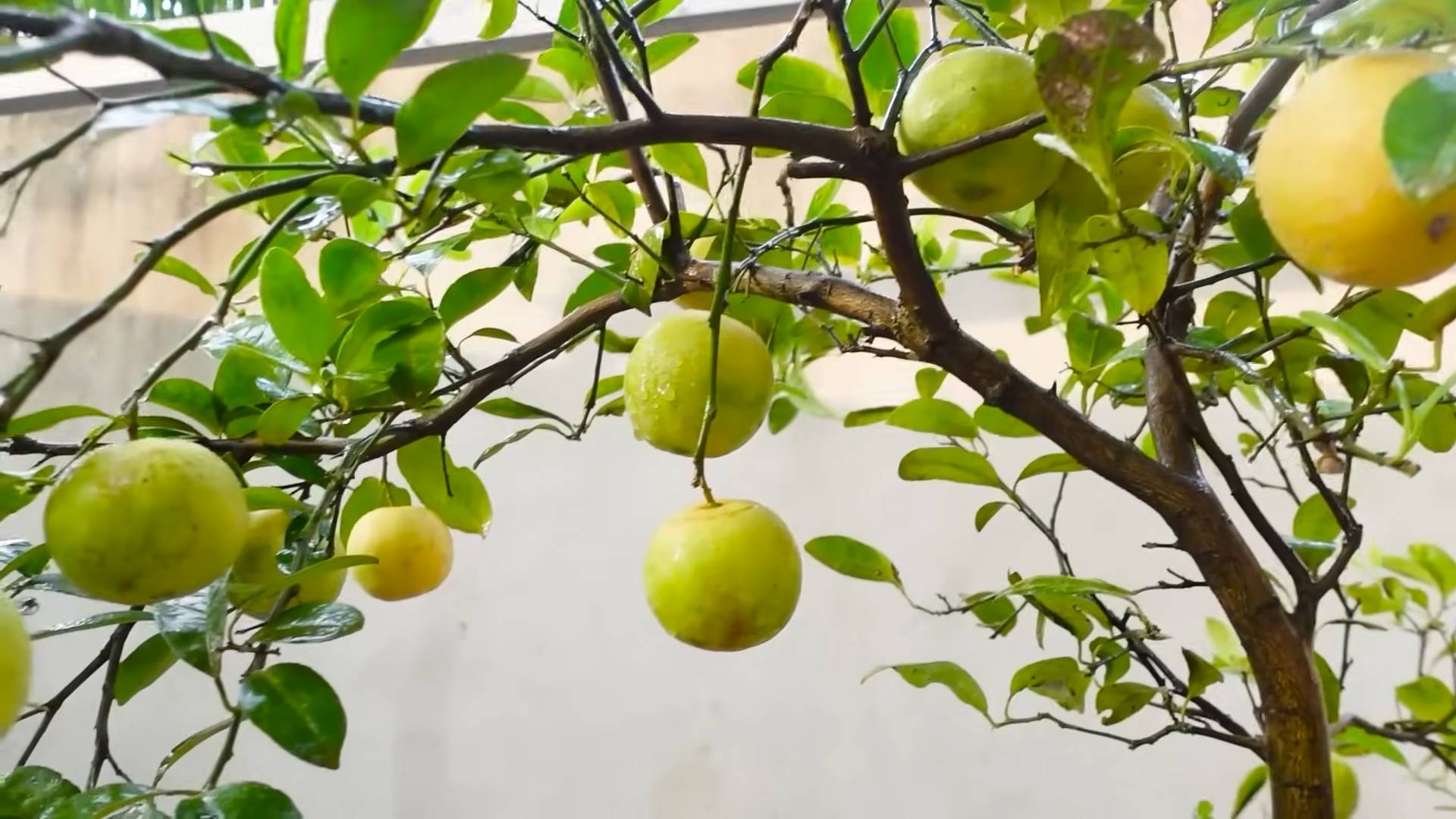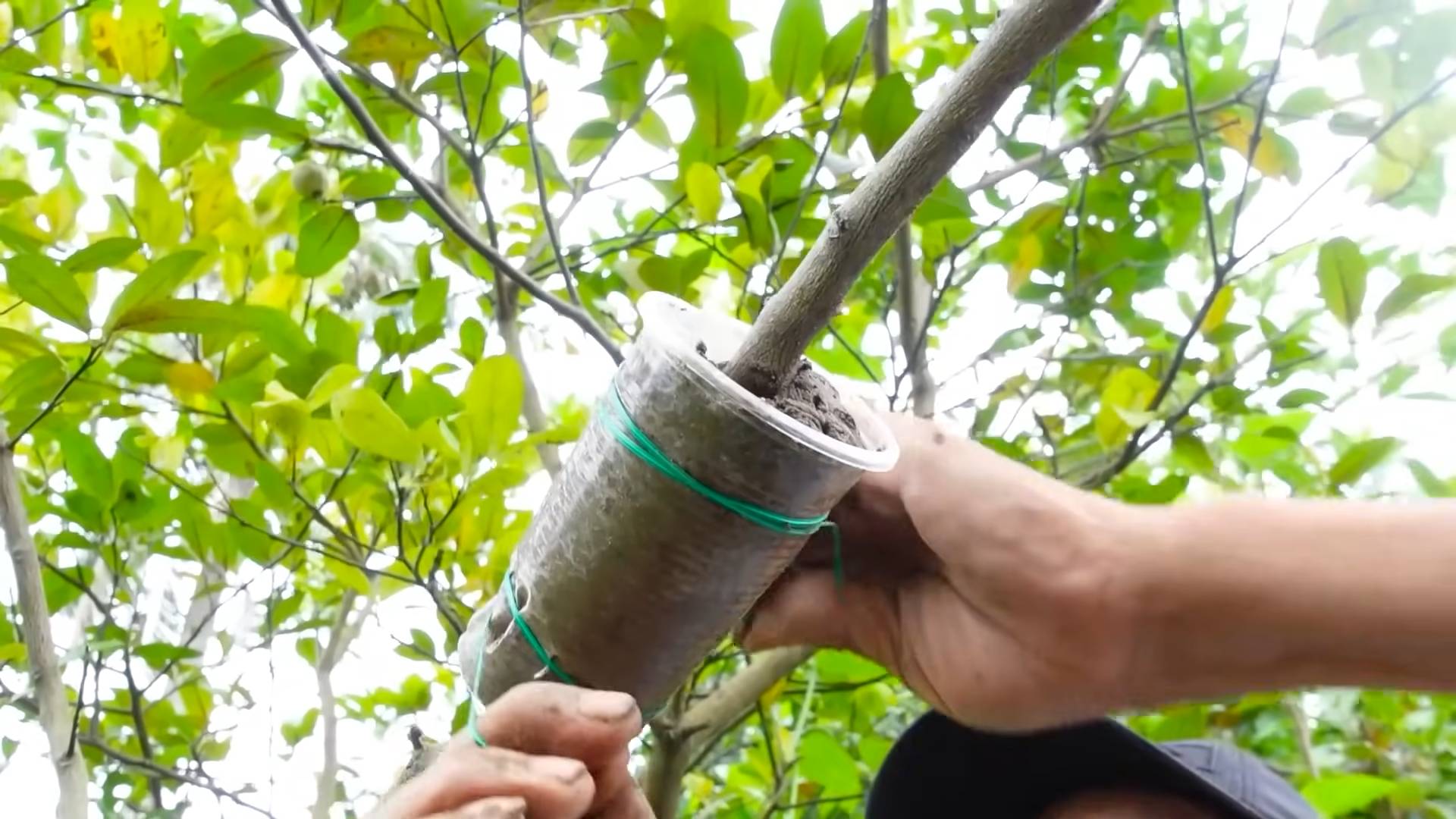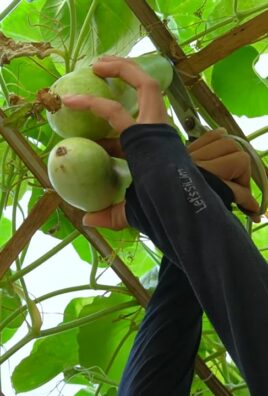Growing lemons indoors might seem like a far-fetched dream, especially if you don’t live in a sunny citrus grove. But guess what? I’m here to tell you that bringing the bright, zesty flavor of homegrown lemons into your home is totally achievable! For centuries, cultivating citrus in controlled environments has been a symbol of luxury and ingenuity, dating back to the elaborate orangeries of European royalty. Imagine, even kings and queens understood the allure of fresh citrus at their fingertips!
But why should you bother with the effort? Well, think about it: no more trips to the grocery store for overpriced, sometimes lackluster lemons. Plus, you get the immense satisfaction of nurturing a plant from seedling to fruit-bearing beauty. More importantly, growing lemons indoors allows you to enjoy fresh, organic lemons year-round, regardless of the weather outside. This DIY guide will provide you with simple, effective tricks and hacks to transform your living space into a mini citrus paradise. Get ready to unlock the secrets to a thriving indoor lemon tree and enjoy the sweet (and sour!) rewards of your labor!

Growing Lemons Indoors: A Zesty DIY Guide
Hey there, fellow plant enthusiasts! Dreaming of fresh, homegrown lemons brightening up your kitchen, even when the weather outside is frightful? Well, you’ve come to the right place! I’m going to walk you through everything you need to know to successfully grow lemons indoors. It’s not as tricky as you might think, and the reward of plucking your own juicy lemons is absolutely worth the effort.
Choosing the Right Lemon Variety
Not all lemon trees are created equal, especially when it comes to indoor growing. You’ll want to select a variety that’s naturally more compact and suited to container life. Here are a few of my favorites:
* Meyer Lemon: This is probably the most popular choice for indoor growing. Meyer lemons are known for their sweeter, less acidic flavor and their relatively small size. They also tend to fruit more readily than other varieties.
* Improved Meyer Lemon: A virus-free version of the Meyer lemon, ensuring a healthier and more productive tree.
* Ponderosa Lemon: While the fruit is quite large, the Ponderosa lemon tree itself can be kept relatively small with pruning. The lemons are very acidic and have a thick rind.
* Lisbon Lemon: A more tart and acidic lemon, but still manageable indoors with proper care.
Gathering Your Supplies
Before we dive into the planting process, let’s make sure you have everything you need. This will save you time and frustration later on.
* Lemon Tree Sapling: Purchase a healthy sapling from a reputable nursery. Look for a tree that’s already showing signs of new growth and has a well-developed root system.
* Large Container: Choose a pot that’s at least 12-16 inches in diameter and has drainage holes. Terra cotta pots are a good option because they allow the soil to breathe.
* Well-Draining Potting Mix: Citrus trees need a well-draining soil to prevent root rot. A mix specifically formulated for citrus trees is ideal, or you can create your own by combining potting soil, perlite, and peat moss.
* Grow Lights (Optional but Recommended): If you don’t have a spot that receives at least 6-8 hours of direct sunlight, you’ll need to supplement with grow lights.
* Citrus Fertilizer: A fertilizer specifically formulated for citrus trees will provide the essential nutrients your tree needs to thrive.
* Watering Can or Hose: For watering your lemon tree.
* Pruning Shears: For trimming and shaping your tree.
* Spray Bottle: For misting the leaves to increase humidity.
* Pebbles or Gravel: To improve drainage in the bottom of the pot.
Planting Your Lemon Tree
Alright, let’s get our hands dirty! This is where the magic begins.
1. Prepare the Pot: Place a layer of pebbles or gravel at the bottom of the pot to improve drainage. This will help prevent the roots from sitting in water.
2. Add Potting Mix: Fill the pot about one-third full with your well-draining potting mix.
3. Remove the Sapling from its Container: Gently remove the lemon tree sapling from its nursery container. Be careful not to damage the roots. If the roots are tightly bound, gently loosen them with your fingers.
4. Position the Sapling: Place the sapling in the center of the pot, making sure the top of the root ball is level with the top of the pot.
5. Fill with Potting Mix: Fill the remaining space in the pot with potting mix, gently pressing down around the root ball to secure the tree.
6. Water Thoroughly: Water the newly planted tree thoroughly until water drains out of the drainage holes. This will help settle the soil and hydrate the roots.
Caring for Your Indoor Lemon Tree
Now that your lemon tree is planted, it’s time to learn how to keep it happy and healthy. Here’s a breakdown of the key care requirements:
Light
Lemon trees need plenty of sunlight to thrive. Aim for at least 6-8 hours of direct sunlight per day. A south-facing window is ideal. If you don’t have enough natural light, supplement with grow lights. Position the grow lights about 12-18 inches above the tree.
Watering
Water your lemon tree when the top inch of soil feels dry to the touch. Water thoroughly until water drains out of the drainage holes. Avoid overwatering, as this can lead to root rot. During the winter months, you may need to water less frequently.
Humidity
Lemon trees prefer a humid environment. If the air in your home is dry, you can increase humidity by misting the leaves regularly with a spray bottle, placing a humidifier near the tree, or setting the pot on a tray filled with pebbles and water (making sure the bottom of the pot isn’t sitting directly in the water).
Fertilizing
Feed your lemon tree with a citrus fertilizer every 4-6 weeks during the growing season (spring and summer). Follow the instructions on the fertilizer label. Reduce or stop fertilizing during the winter months when the tree is dormant.
Pruning
Prune your lemon tree regularly to maintain its shape and encourage fruit production. Remove any dead, damaged, or crossing branches. You can also prune to control the size of the tree. The best time to prune is in late winter or early spring, before new growth begins.
Pollination
Indoor lemon trees may need help with pollination to produce fruit. You can hand-pollinate the flowers by using a small paintbrush to transfer pollen from one flower to another. Gently brush the pollen from the stamen (the male part of the flower) onto the pistil (the female part of the flower). You can also use a small fan to circulate air around the tree, which can help with pollination.
Pest Control
Keep an eye out for common pests like aphids, spider mites, and scale. If you notice any pests, treat them with an insecticidal soap or neem oil. Follow the instructions on the product label.
Repotting
Repot your lemon tree every 1-2 years, or when it becomes root-bound. Choose a pot that’s slightly larger than the previous one. When repotting, gently loosen the roots and remove any circling roots.
Troubleshooting Common Problems
Even with the best care, you might encounter some challenges along the way. Here are a few common problems and how to address them:
* Yellowing Leaves: This can be caused by a variety of factors, including overwatering, underwatering, nutrient deficiencies, or pest infestations. Check the soil moisture, fertilize the tree, and inspect for pests.
* Leaf Drop: Leaf drop can be caused by stress, such as sudden changes in temperature, light, or watering. Try to maintain consistent conditions and avoid moving the tree unnecessarily.
* Lack of Fruit: Lack of fruit can be caused by insufficient light, improper pollination, or nutrient deficiencies. Make sure the tree is getting enough light, hand-pollinate the flowers, and fertilize regularly.
* Root Rot: Root rot is caused by overwatering and poor drainage. Make sure the pot has drainage holes and avoid overwatering. If you suspect root rot, repot the tree in fresh, well-draining soil.
Harvesting Your Lemons
The moment you’ve been waiting for! Depending on the variety, it can take anywhere from 6 months to a year for lemons to ripen. Lemons are typically ready to harvest when they are fully colored (yellow or orange, depending on the variety) and slightly soft to the touch. Gently twist the lemon from the tree.
Enjoying Your Homegrown Lemons
Now that you’ve harvested your lemons, it’s time to enjoy the fruits of your labor! Use them in your favorite recipes, make lemonade, or simply enjoy a slice in your tea. There’s nothing quite like the taste of homegrown lemons!
Growing lemons indoors takes a little patience and effort, but it’s a rewarding experience. With the right care, you can enjoy fresh, homegrown lemons year-round. Happy growing!

Conclusion
So, there you have it! Growing lemons indoors might seem like a challenge reserved for seasoned gardeners, but with a little know-how and the right approach, you can absolutely cultivate your own miniature citrus grove right inside your home. This DIY trick isn’t just about having fresh lemons readily available; it’s about bringing a touch of sunshine and the invigorating scent of citrus into your daily life. Imagine the satisfaction of plucking a perfectly ripe lemon from your own tree, knowing you nurtured it from a tiny seed or sapling.
This method is a must-try for several reasons. First, it allows you to enjoy fresh, organic lemons year-round, regardless of your climate. No more relying on store-bought lemons that may have traveled miles and lost some of their zest. Second, it’s a fantastic way to add a touch of greenery and natural beauty to your indoor space. A lemon tree, with its glossy leaves and fragrant blossoms, can be a stunning focal point in any room. Finally, it’s a rewarding and educational experience. You’ll learn about plant care, patience, and the miracle of nature as you watch your lemon tree grow and thrive.
Beyond the Basics: Exploring Variations
Don’t be afraid to experiment! Once you’ve mastered the basics of growing lemons indoors, you can explore different varieties of lemon trees. Meyer lemons are a popular choice for indoor growing due to their smaller size and sweeter flavor. You could also try growing other citrus fruits like limes or oranges using similar techniques. Consider using different types of containers to match your décor, from terracotta pots to sleek, modern planters. You can also experiment with different soil mixes to find what works best for your specific environment. Some gardeners even use grow lights to supplement natural sunlight, especially during the darker winter months. Another variation is to try different pruning techniques to shape your tree and encourage fruit production. Espalier, a method of training trees to grow flat against a wall or trellis, can be a beautiful and space-saving option for indoor lemon trees.
A Call to Action: Share Your Citrus Journey!
We wholeheartedly encourage you to give this DIY trick a try. Growing lemons indoors is a rewarding and fulfilling experience that will bring joy and fresh citrus to your home. Don’t be intimidated by the perceived difficulty; with the right information and a little dedication, you can successfully cultivate your own indoor lemon tree.
Once you’ve embarked on your citrus-growing adventure, we’d love to hear about your experience! Share your tips, tricks, and photos with us in the comments section below. Let’s create a community of indoor citrus enthusiasts and learn from each other’s successes and challenges. What variety of lemon did you choose? What challenges did you face, and how did you overcome them? What are your favorite ways to use your homegrown lemons? Your insights and experiences will be invaluable to other readers who are just starting out. So, grab a pot, some soil, and a lemon tree sapling, and get ready to enjoy the fruits (literally!) of your labor. Happy growing!
Frequently Asked Questions (FAQ)
1. What is the best variety of lemon tree to grow indoors?
The Meyer lemon is generally considered the best variety for indoor growing. It’s a hybrid between a lemon and a mandarin orange, resulting in a sweeter, less acidic fruit. Meyer lemon trees are also more compact than other lemon varieties, making them well-suited for container growing. Other good options include dwarf varieties of Lisbon or Eureka lemons, but these may require more careful pruning to maintain a manageable size. Consider the amount of space you have available and your personal preference for lemon flavor when making your choice.
2. How much sunlight does an indoor lemon tree need?
Lemon trees need at least 6-8 hours of direct sunlight per day to thrive. Place your tree in a south-facing window if possible, as this will provide the most sunlight. If you don’t have a south-facing window, an east- or west-facing window can also work, but you may need to supplement with artificial light, especially during the winter months. Grow lights, specifically those designed for plants, can provide the necessary light spectrum for healthy growth and fruit production. Monitor your tree closely for signs of insufficient light, such as leggy growth, pale leaves, or a lack of flowering.
3. What type of soil is best for growing lemons indoors?
Lemon trees need well-draining soil that is slightly acidic. A good potting mix for citrus trees should consist of a combination of peat moss, perlite, and vermiculite. You can also add some compost or aged manure to provide additional nutrients. Avoid using garden soil, as it can become compacted and doesn’t drain well, which can lead to root rot. Ensure that your pot has drainage holes to allow excess water to escape.
4. How often should I water my indoor lemon tree?
Water your lemon tree when the top inch of soil feels dry to the touch. Water thoroughly until water drains out of the drainage holes. Avoid overwatering, as this can lead to root rot. During the winter months, when the tree is not actively growing, you may need to water less frequently. Check the soil moisture regularly and adjust your watering schedule accordingly. The frequency of watering will also depend on the size of the pot, the type of soil, and the humidity levels in your home.
5. How often should I fertilize my indoor lemon tree?
Lemon trees are heavy feeders and need regular fertilization to thrive. Fertilize your tree every 2-4 weeks during the growing season (spring and summer) with a citrus-specific fertilizer. Follow the instructions on the fertilizer label carefully. Reduce or stop fertilizing during the winter months when the tree is dormant. Look for a fertilizer that contains micronutrients like iron, zinc, and manganese, as these are essential for healthy citrus growth.
6. How do I pollinate my indoor lemon tree?
Indoor lemon trees may need help with pollination, as there are no bees or other insects to do the job. You can hand-pollinate your tree by using a small paintbrush to transfer pollen from the stamen (the male part of the flower) to the pistil (the female part of the flower). Gently brush the pollen onto the pistil of each flower. You can also use a cotton swab or your finger to do this. Repeat this process every few days when the tree is in bloom.
7. What are some common pests and diseases that affect indoor lemon trees?
Common pests that can affect indoor lemon trees include aphids, spider mites, scale, and mealybugs. Inspect your tree regularly for signs of infestation, such as sticky residue, webbing, or visible insects. Treat infestations promptly with insecticidal soap, neem oil, or horticultural oil. Root rot is a common disease that can affect lemon trees, especially if they are overwatered. Prevent root rot by using well-draining soil and avoiding overwatering.
8. How do I prune my indoor lemon tree?
Pruning is important for maintaining the shape and health of your indoor lemon tree. Prune your tree in late winter or early spring, before new growth begins. Remove any dead, damaged, or crossing branches. You can also prune to shape the tree and encourage bushier growth. Avoid removing more than one-third of the tree’s foliage at a time. Pruning can also help to improve air circulation and light penetration, which can reduce the risk of pests and diseases.
9. Why is my lemon tree dropping its leaves?
Leaf drop can be caused by a variety of factors, including insufficient light, overwatering, underwatering, sudden changes in temperature, or pest infestations. Evaluate your tree’s growing conditions and make adjustments as needed. Ensure that your tree is getting enough sunlight, water it properly, and protect it from extreme temperature fluctuations. If you suspect a pest infestation, treat it promptly.
10. How long does it take for an indoor lemon tree to produce fruit?
It can take several years for a lemon tree grown from seed to produce fruit. Grafted trees, which are more commonly sold at nurseries, will typically produce fruit sooner, often within 1-2 years. Be patient and provide your tree with the proper care, and you will eventually be rewarded with delicious, homegrown lemons. Remember that consistent care and the right environment are key to successful indoor lemon cultivation.





Leave a Comment